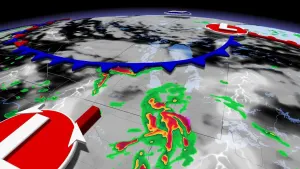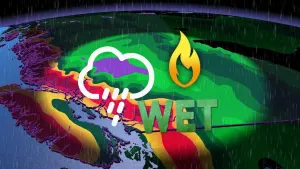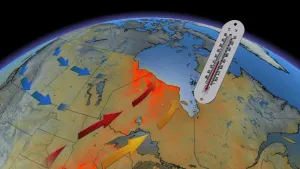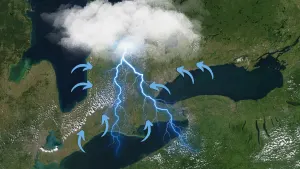
As fires rage, unusually dry conditions cover nearly half of Canada
Months of subpar rains across Canada have left a huge swath of the country abnormally dry, and conditions might get worse this summer
After one of the worst starts to wildfire season in recent memory, it might not come as a surprise that nearly half of Canada is abnormally dry or mired in full-blown drought conditions.
The latest update of the Canadian Drought Monitor from Agriculture Canada showed that 47 per cent of Canada was either abnormally dry or contending with some level of drought conditions by the beginning of June. This includes more than 70 per cent of the country’s agricultural lands, the agency’s update noted.
This represents a 14 per cent increase in the amount of land across the country affected by dry conditions since the previous monthly update, and a nine per cent increase in the expanse of agricultural land impacted by warm temperatures and low rainfall.

Parched land spread from coast to coast as we began meteorological summer, with the lack of rainfall affecting folks from Vancouver Island to the Avalon Peninsula.
Expert analysis of rainfall data, soil moisture, and other indicators showed that June began with the worst drought conditions focused on the western Prairies, followed close behind by a severe drought in the Maritimes.
Most of Alberta found itself in a moderate drought or worse to begin the month. A severe drought settled in through central and southern portions of the province, focused on the QE2 corridor from south of Claresholm north to Edmonton and beyond. This extended drought fuelled a historic start to Alberta’s wildfire season this year.
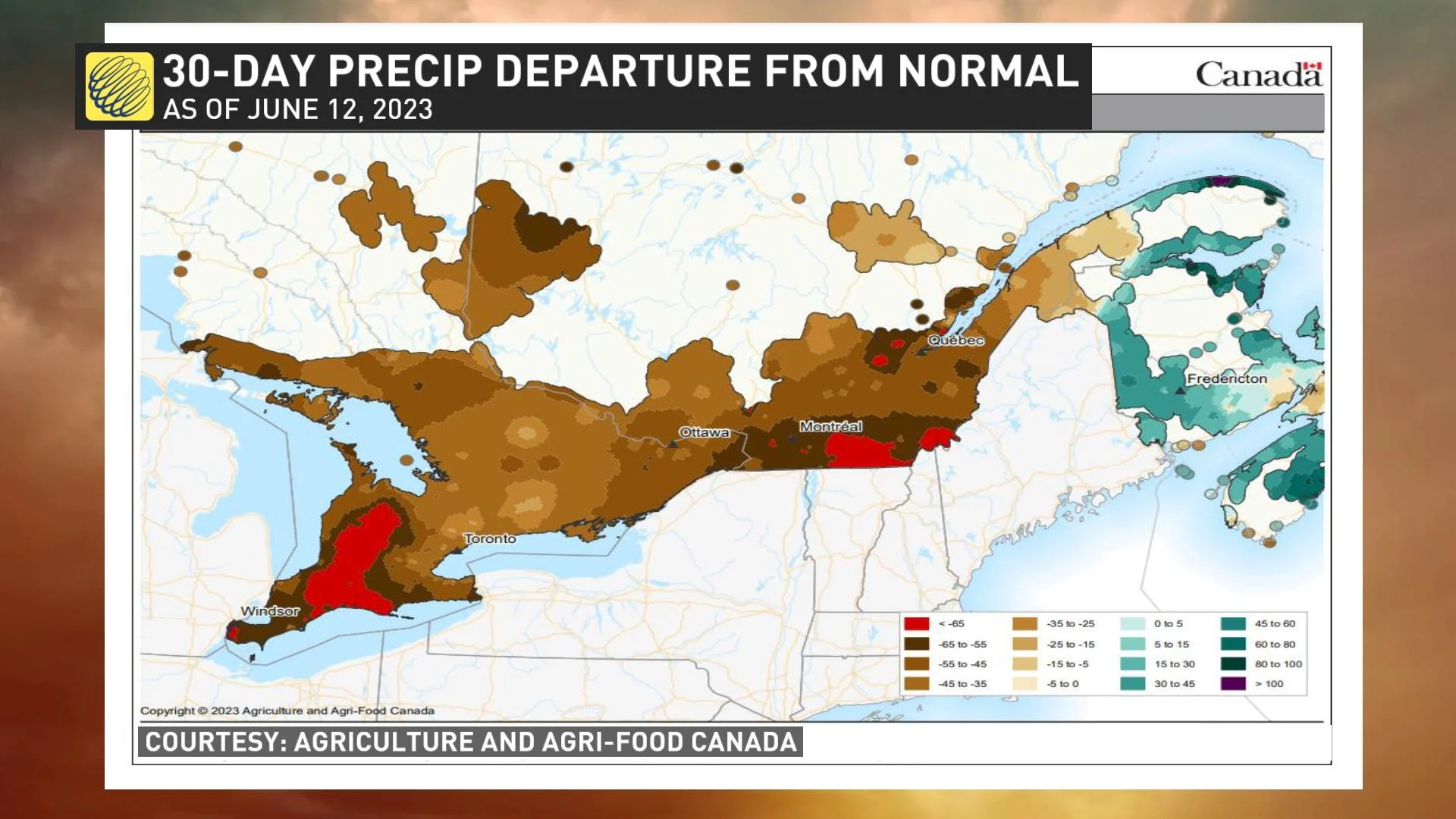
The same pattern that’s starved Alberta’s land of moisture stretched into northeastern British Columbia and a swath of the Northwest Territories, both of which have seen terrible fires this season, as well. One particularly intense fire in the N.W.T. grew so large by the second week of June that it could fit all of Yellowknife inside the bounds of the fire 24 times over.
Severe drought covers much of the Maritimes, as well, including the entire southern half of Nova Scotia, most of Prince Edward Island, and portions of New Brunswick and the Gaspé Peninsula.
Much like we saw in Alberta, this drought fuelled historic fires in Nova Scotia, including the Shelburne fire, which will likely land in the books as the province’s largest wildfire ever recorded.
WATCH: We're in an El Niño, which historically means this for Canada
Patches of drought also covered portions of the eastern Prairies and southern British Columbia by the end of May, with abnormally dry conditions reported in extreme southwestern Ontario and eastern Quebec, as well.
The drought outlook for the weeks ahead doesn’t bode well for much of the country. Agriculture Canada’s monthly drought outlook, released concurrently with the monthly update, calls for drought continuation across many of the areas currently affected by the lack of precipitation.
Not just that, but the outlook also expects drought development across much of the eastern half of Canada, stretching from Manitoba into the Maritimes.
The only areas Agriculture Canada expects to see improvement are in Alberta’s Elbow Region, as well as small sections of Saskatchewan and B.C.’s South Coast.







